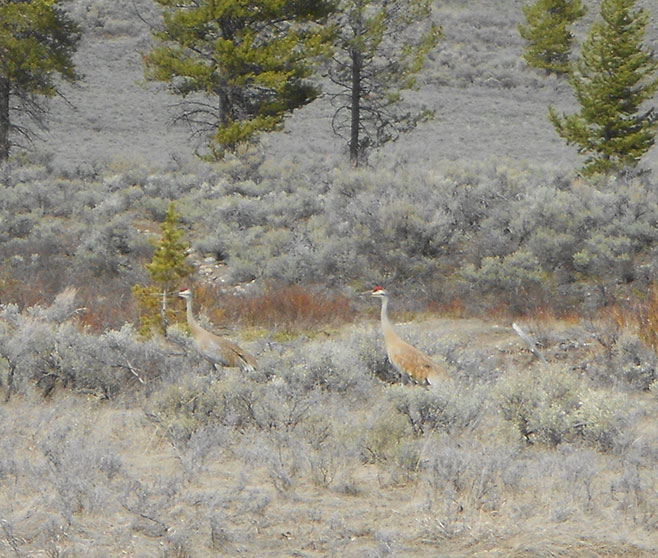A few of them are “warm weather” types and so “fly the coop” each fall and return in the spring. These include a number of bird species, most notably the Mountain Bluebird and the Sandhill Cranes. While both of these beautiful neighbors have been back for at least month, April 30th was the first day the Cranes had actually visited the ranch. We’d heard them flying over in early April, probably headed upstream to their favorite nesting sites. But, on Tuesday, they actually came down to the area next to our gate, where we enjoyed watching them high-step around the vegetation and hang out for the day.
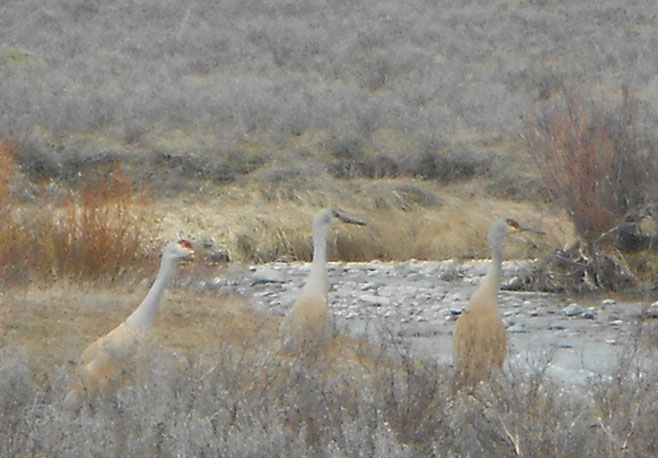
The last several years, we’ve had one nesting pair along with some bachelors. This year, it appears we may have TWO nesting pairs and one lonely colt. We’re assuming that the 2nd pair is one of the colts from previous years who has finally found its mate.
Named after its preferred nesting ground (Nebraska’s sandhills near the Platte River). Up to 450,000 cranes migrate through that area yearly, and in their wintering areas they form flocks of over 10,000 birds.
While typically gray, adults can appear ochre during breeding in the migratory population due to staining and wear. Averaging 9-10 pounds and 2.5 – 4 feet high, it has a red forehead, white cheeks and a long dark pointed bill. Its long dark legs trail behind in flight, and the long neck is kept straight in flight. The immature individuals will have reddish brown above and gray below. Other than a slight size difference, the sexes are similar in appearance. The wings are quite impressive when extended and can measure up to nearly 7’ long! This allows them to stay aloft for many hours, with only occasional flapping of their wings, thereby extending little energy.
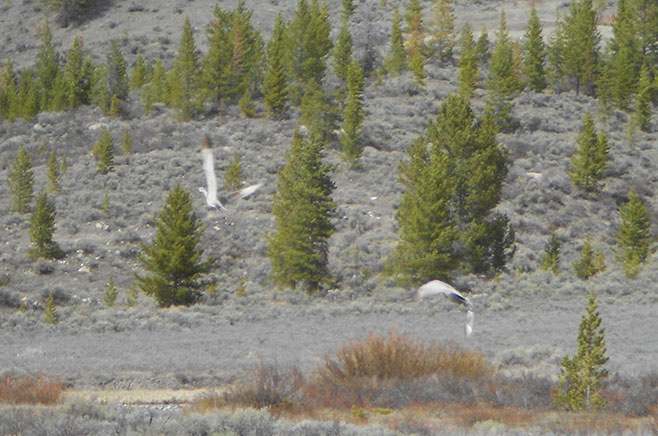
Their call has been described as “a loud trumpeting call that suggests a French-style “r” rolled in the throat” but I tend to describe it as sounding like they have a terrible cold and are coughing through a megaphone, or like they’re gargling olive oil. It is NOT a pretty call, and is very loud. AND.. the mated pairs engage in “unison calling” by standing close together, calling in a synchronized and complex duet. The female makes two calls for every single call of the male (of course… don’t all women do twice the work?).
Sandhill Cranes are mainly herbivorous, often eating various types of food based on availability. They often feed with their bills down to the ground as they root around for seeds and other foods in shallow wetlands with vegetation or various upland habitats.
Sandhill cranes raise one brood per year. For our local cranes (as they are migratory) egg-laying usually begins between early April and late May. Both members of a breeding pair build the nest, which is typically located in marshes, bogs, or swales, though cranes will occasionally nest on dry land. The female usually lays 2 eggs that are oval-shaped and dull brown with reddish brown markings. Both parents participate in incubation, which usually lasts 30 days. The chicks hatch covered in down, with their eyes open and are able to leave the nest within 24 hours of hatching. The parents brood the chicks for up to 3 weeks after hatching. They feed the young intensively for the first few weeks, and with decreasing frequency until they reach independence at 9 or 10 months old.
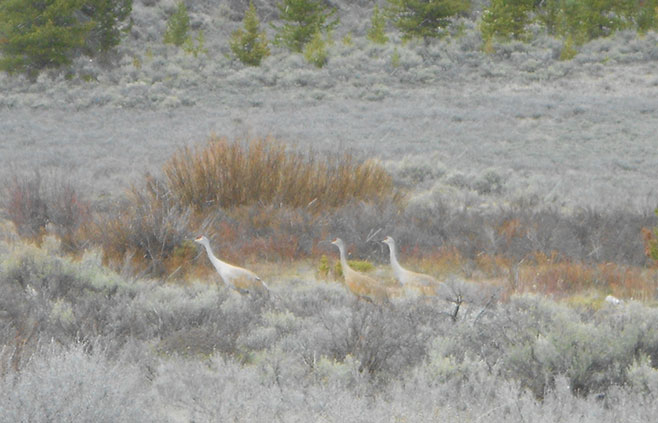
The chicks remain with their parents until 1 or 2 months before the parents begin laying the next clutch of eggs. After leaving their parents, the chicks form nomadic flocks with other subadults (“Colts”) and non-breeders. They remain with these flocks until they form breeding pairs and begin breeding between the ages of 2 and 7 years old. While cranes that reach adult independent age typically live around 7 years, they can live to at least 21 years of age.
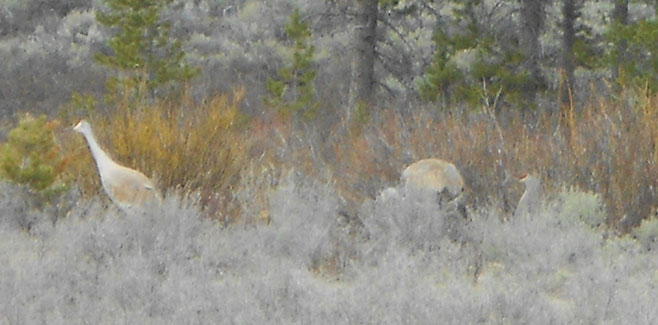
The predators of cranes include a wide variety such as foxes, raccoons, coyotes, wolves, bobcats and lynxes. Birds such as corvids, ravens, crows and hawks will prey on eggs or young cranes. Cranes of all ages may be predated by eagles, large owls and even Peregrine Falcons. While employing a variety of defense techniques, the cranes best and final defense is to attack back, with hissing and, stabbing with their bill (which is powerful enough to pierce the skull of a small carnivore) and kicking with their feet.
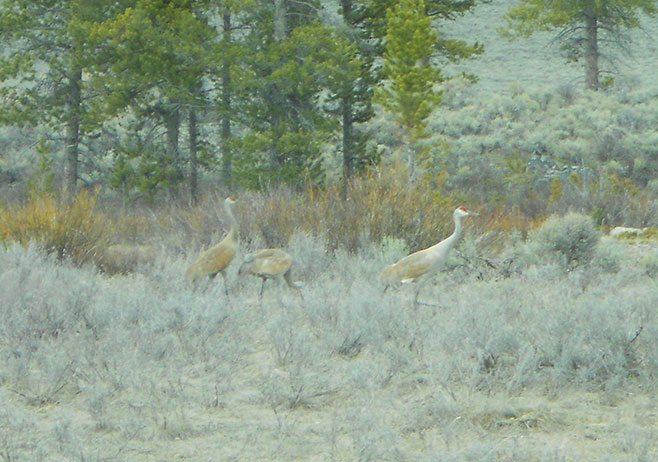
(Thanks to Wikipedia where much of this info was found)
